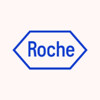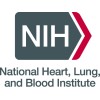
Efficacy Study: Darbepoetin Alfa for the Treatment of Anemia in Patients With Chronic Kidney Disease...
AnemiaKidney DiseaseThe purpose of this study is to evaluate whether the efficacy of darbepoetin alfa SF is equivalent to that of darbepoetin alfa RB for the treatment of anemia in patients with chronic kidney disease (CKD) receiving hemodialysis.

Safety and Pharmacokinetics of Single Intravenous Doses of Peginesatide in Healthy Volunteers
AnemiaChronic Kidney Disease2 moreThe purpose of this study is to evaluate the safety, pharmacokinetics (PK), and minimum pharmacologically active dose of peginesatide in Healthy Volunteers.

A Study of Mircera in the Treatment of Anemia in Patients With Chronic Kidney Disease Not on Dialysis...
AnemiaThis study will assess the efficacy and safety of subcutaneous Mircera in the treatment of renal anemia in patients with chronic kidney disease who are not on dialysis and not receiving epoetin or any other erythropoietic substance. The anticipated time on study treatment is 1-2 years and the target sample size is 100-500 individuals.

Combination Immunosuppressive Therapy to Prevent Kidney Transplant Rejection in Adults
Kidney TransplantationKidney DiseaseTransplant rejection occurs when a patient's body does not recognize the new organ and attacks it. Patients who have kidney transplants must take drugs to prevent transplant rejection. Alemtuzumab is a man-made antibody used to treat certain blood disorders. The purpose of this study is to test the safety and effectiveness of using alemtuzumab in combination with two other drugs, sirolimus and tacrolimus, to prevent organ rejection after kidney transplantation. This study will also test whether this combination of medications will allow patients to eventually stop taking antirejection medications entirely. Study hypothesis: A new strategy of immunosuppression using alemtuzumab, tacrolimus, and sirolimus for human renal transplantation will permit a step-wise withdrawal from immunosuppressive drugs.

Omega-3 Fatty Acids That Affect the Immune System in Kidney Transplant Patients
Kidney DiseasesThe purpose of this study is to evaluate the effectiveness of nutritional supplements in increasing the amount of omega-3 fatty acids (and arginine) in the red blood cell membranes and plasma of kidney transplant patients, and, secondarily, to compare patient compliance. The long-term goal of this study is to develop low risk therapies that will allow improved and lasting survival of donor tissue with minimal suppression of the immune system.

Pharmacokinetics/Pharmacodynamics of Argatroban Injection in End-Stage Renal Disease Patients Undergoing...
Kidney FailureChronic2 moreThe primary goals of this investigation are to provide guidance on how to dose Argatroban in patients undergoing hemodialysis and to assess the safety and tolerability of Argatroban in hemodialysis patients. The secondary goal of the study will be to assess the adequacy of anticoagulation during hemodialysis.

A Phase II Randomized, Double-Blind, Placebo-Controlled Trial to Determine the Efficacy of Prednisone...
HIV InfectionsAIDS-Associated NephropathyTo determine the efficacy and safety of prednisone in patients with HIV-associated nephropathy. To determine the effects of prednisone on serum creatinine, urinary protein, and creatinine clearance. HIV-associated nephropathy is characterized by heavy proteinuria, rapidly progressive renal insufficiency, and distinct nephropathologic changes. The syndrome most often occurs in patients with advanced HIV disease. Little is known about the effects of corticosteroids on the progression of HIV disease. In light of the possible beneficial effects of corticosteroids on HIV-associated nephropathy, a controlled trial using prednisone is warranted.

MRI to Detect Embolism Following Angiography and Angioplasty-Stenting of the Renal Artery
Renal Artery ObstructionKidney DiseaseThis study will use magnetic resonance imaging (MRI) to picture the kidney and renal arteries (arteries that supply blood to the kidney) in patients scheduled for kidney artery angiogram and angioplasty/stenting procedures. An angiogram is a way of taking pictures of arteries that shows areas of narrowing caused by atherosclerosis-a buildup of plaque on the vessel wall. Angioplasty/stent is a treatment procedure in which a balloon-tipped catheter is inserted in the artery and advanced to the area of blockage to open the vessel, increasing blood flow to the kidney. A permanent metal tube (stent) may or may not be put in place to maintain the opening. During either of these invasive procedures, small pieces of plaque can break off and travel in the blood to lodge elsewhere in the body. This is called embolization. Lodged in the kidney, the embolus can impair kidney function. Currently, these emboli cannot be detected. A new way of visualizing the kidneys that allows detection of emboli may reveal whether material has moved to the kidneys and predict if there will be any kidney damage. Patients 21 years of age and older with suspected kidney artery disease scheduled for invasive angiographic evaluation in NIH protocol 95-H-0047 may be eligible for this study. Participants will be assigned to one of two study groups, based on the angiogram findings and the decision to have the angioplasty/stent procedure. Participants in both groups will have baseline MRI scans up to 2 weeks before the invasive procedure (angiogram with or without angioplasty/stent) and again within a day after the procedure. Patients who undergo angioplasty/stent will have another MRI study within about a month following the procedure. MRI uses a magnetic field and radio waves to produce images of body tissues. The patient lies on a table that slides into a large hollow tube (the scanner). During part of the scan, a material called gadolinium contrast may be injected into a vein. This substance brightens the images to better show the kidneys, their blood vessels and blood flow. The procedure lasts from about 1 to 2 hours. During the MRI, the heart is monitored with an electrocardiogram (EKG) and breathing is monitored with a flexible belt. Blood pressure is measured intermittently. The patient can communicate with a staff member at all times. Blood samples will be drawn from an arm vein at the initial clinic visit, within a day after the procedure and about 1 week after the procedure. For patients who had the angioplasty/stent procedure, a third blood sample will be taken within another 6 six weeks. The blood samples will be used to check for changes in kidney function.

Phase II Randomized Study of the Effects of Growth Hormone on Children and Adolescents on Maintenance...
Renal OsteodystrophyEnd Stage Renal DiseaseOBJECTIVES: I. Evaluate the separate and combined skeletal effects of recombinant human growth hormone (GH) and calcitriol in patients with adynamic renal osteodystrophy. II. Assess whether calcium-regulated changes in parathyroid hormone secretion predict changes in bone formation. III. Characterize the response to GH in cancellous bone and in growth plate cartilage in patients with secondary hyperparathyroidism during calcitriol therapy.

Efficacy and Safety Study to Evaluate MT-6548 in Non-dialysis Subjects With Anemia Associated With...
Anemia; Non-dialysis Dependent Chronic Kidney DiseaseFor Non-dialysis subjects with anemia associated with chronic kidney disease, demonstrate non-inferiority of MT-6548 compared to darbepoetin alfa using Hb value and evaluate long-term safety of MT-6548. For subjects not currently receiving ESAs, evaluate Hb correction and maintenance effect of MT-6548 and for subjects currently receiving ESAs, evaluate Hb conversion and maintenance effect of MT-6548
